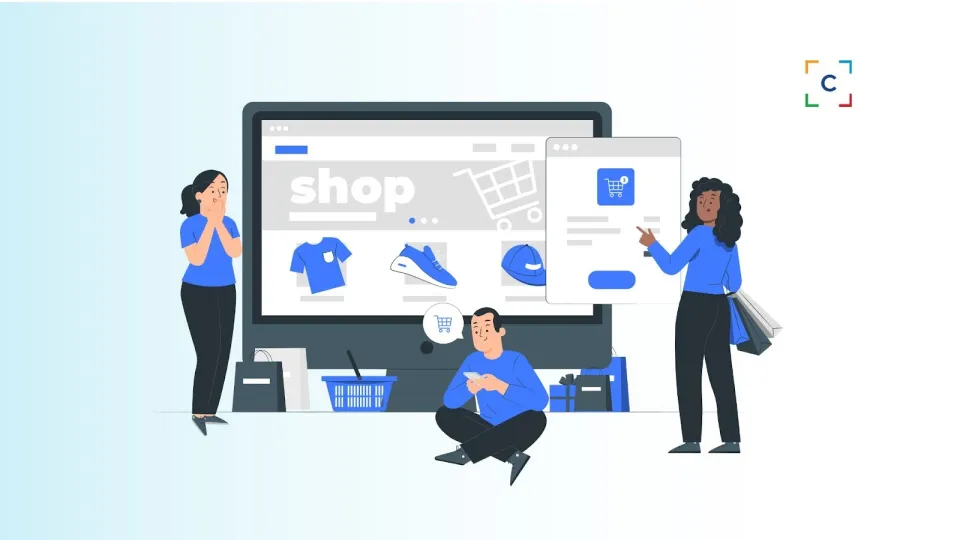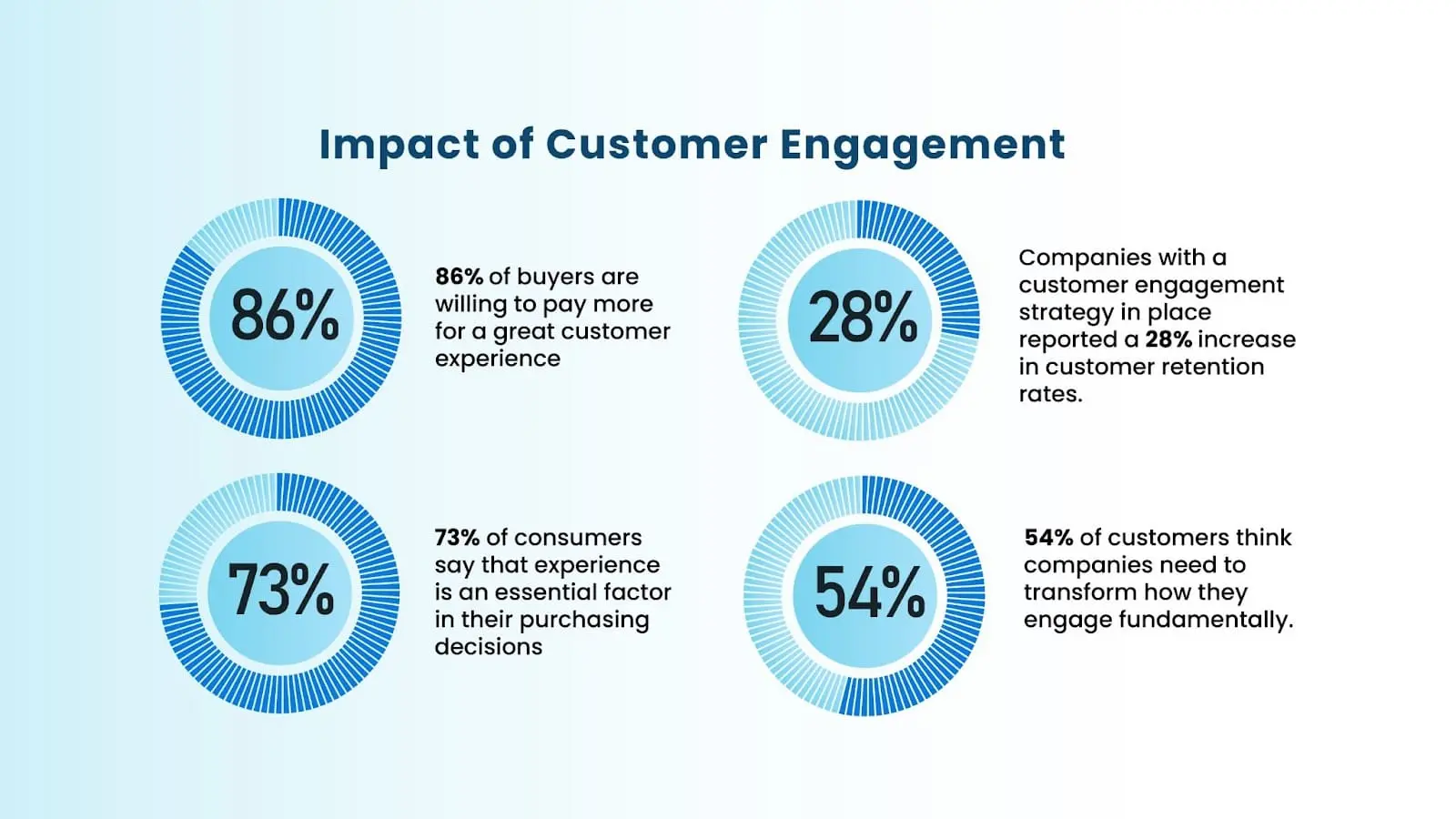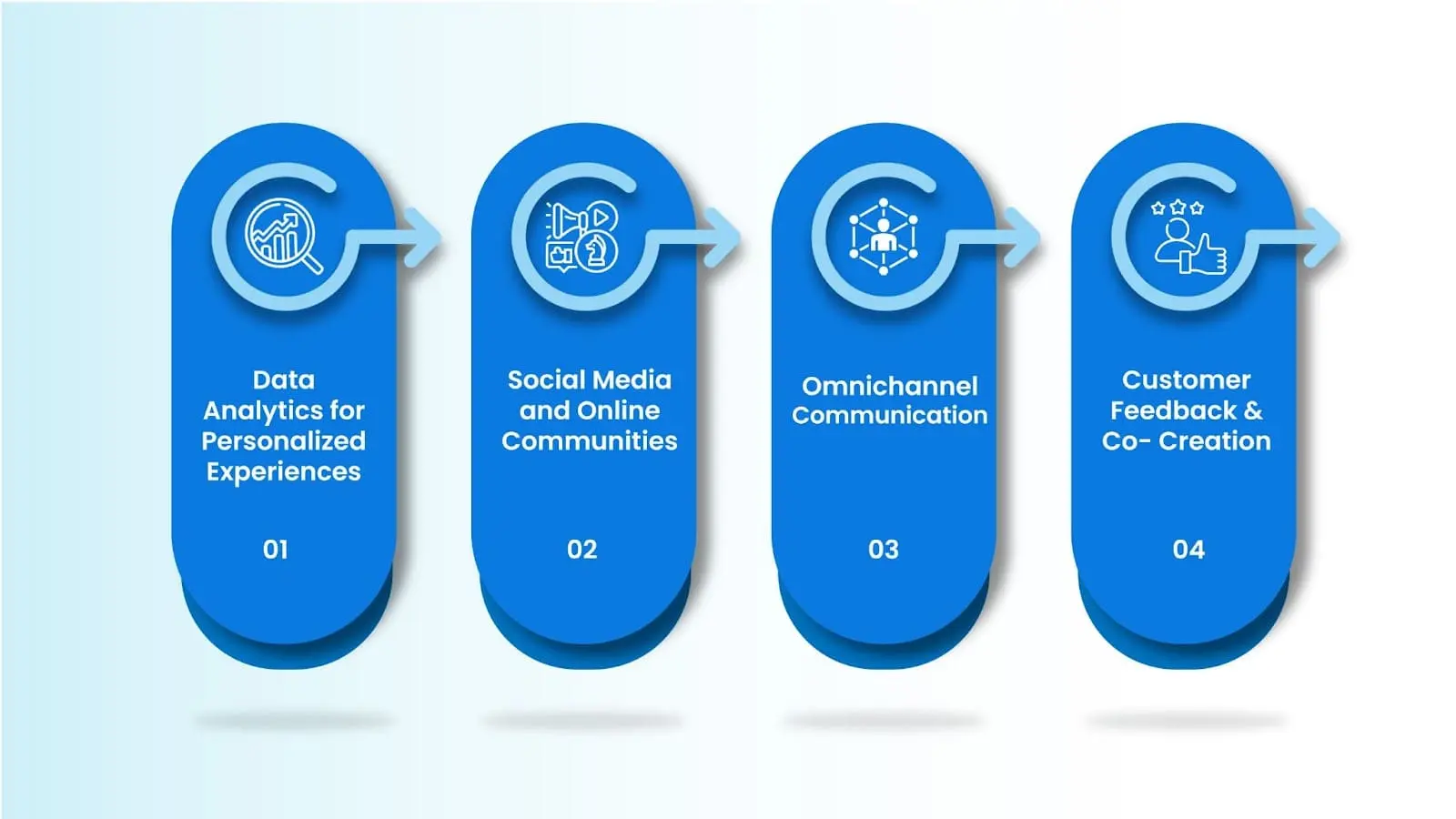A Customer Engagement Guide: Why It Is Important and How to Measure It

Engaging with your customers is more than just a nice-to-have attitude; it's the lifeblood of your business.
Gone are the days of one-way communication and transactional relationships. Now, it's all about building meaningful connections, understanding your customers' needs, and delivering personalized experiences that keep them coming back for more.
Customer engagement is vital for any business aiming to thrive in today's competitive market. It's the foundation for building lasting relationships and loyalty, as customers who feel understood and valued are more likely to return and advocate for the brand.
By prioritizing engagement, businesses can enhance their reputation, drive growth, and create a loyal customer base that is key to long-term success.

Here are some statistical facts that prove how Customer engagement is important:
- 86% of buyers are willing to pay more for a great customer experience.
- Companies with a customer engagement strategy in place reported a 28% increase in customer retention rates.
- 73% of consumers say that experience is an essential factor in their purchasing decisions
- 54% of customers think companies need to transform how they engage fundamentally
Key Components of Customer Engagement
- Emotional Connection: Build a strong emotional bond with customers by understanding their needs and aligning your brand messaging to resonate with their emotions.
- Personalization: Enhance customer engagement by tailoring communications, products, and services to individual customer preferences and needs.
- Consistent Communication: Maintain regular contact with customers through various channels to keep your brand top-of-mind and foster trust.
- Customer Feedback and Involvement: Actively seek and value customer feedback, involving them in product development and decision-making processes to make them feel valued and engaged.
Customer engagement has advanced greatly over the years, transitioning from simple transactions to complex, meaningful interactions. With technological advancements and changing consumer preferences, the ways in which brands connect with their customers have transformed significantly.
Here's a closer look at some fundamental changes:
- Two-Way Conversations: Gone are the days of one-sided communication. Today, engagement is about dialogue, with social media and other digital platforms enabling customers to interact with brands, share feedback, and participate in conversations. This shift has made customer engagement more dynamic and interactive.
- Personalization at Scale: Modern technology has enabled brands to tailor their interactions to individual customer preferences, making engagement more relevant and impactful. From personalized product recommendations to targeted marketing campaigns, customers now expect a level of personalization that was not possible in the past.
- Building Relationships: The focus has shifted from merely completing transactions to nurturing long-term relationships with customers. Brands are investing in creating memorable experiences, fostering loyalty, and turning customers into advocates, recognizing that strong relationships are key to sustained engagement.
- Omnichannel Approach: Customers now interact with brands across multiple channels, both online and offline. An omnichannel approach ensures a seamless and consistent experience across all touchpoints, which is crucial for maintaining engagement and building trust.
- Customer-Centricity: There's a greater emphasis on understanding and meeting customer needs, leading to more customer-focused strategies and experiences. This customer-centric approach prioritizes the customer's perspective, resulting in products, services, and engagement strategies that are more aligned with their expectations and preferences.
Importance of Customer Engagement
- Building Brand Loyalty and Trust: Customer engagement is crucial in fostering a sense of loyalty and trust among customers. Regular interaction and personalized experiences make customers feel valued, leading to a stronger emotional connection with the brand.
- Enhancing Customer Experience: By focusing on customer engagement, companies can gather insights into customer preferences and tailor their offerings accordingly. This proactive approach results in a more satisfying and enjoyable customer experience.
- Driving Sales and Revenue Growth: Effective customer engagement strategies can directly impact the bottom line. Engaged customers are more likely to make repeat purchases, refer others, and become brand advocates, thereby driving sales and revenue growth.
- Gaining Competitive Advantage: In a crowded market, customer engagement can be a differentiator. Companies that excel in engaging their customers can stand out from competitors, attract more customers, and retain them for extended periods.
Customer Engagement Strategies

- Leveraging Data Analytics for Personalized Experiences: One effective customer engagement strategy is to tap into the power of data analytics. By understanding your customers' behaviors and preferences through data, you can tailor your offerings to provide personalized experiences that truly resonate with them. This approach not only makes your customers feel valued but also enhances their overall experience with your brand.
- Utilizing Social Media and Online Communities: Social media and online communities are fantastic tools for engaging with your audience in a friendly and approachable manner. By actively participating in these platforms, you can connect with your customers, share helpful content, and build a sense of community around your brand. This helps to strengthen customer loyalty and encourages your audience to become advocates for your brand.
- Implementing Omni Channel Communication: To create a seamless customer experience, it's important to implement an omnichannel communication strategy. This means providing consistent and accessible interactions across all channels, whether in-store, online, or through social media. By making it easy for customers to connect with you wherever they are, you enhance their experience and make your brand more approachable.
- Focusing on Customer Feedback and Co-Creation: Listening to your customers' feedback is a vital part of any successful customer engagement strategy. Encouraging them to share their thoughts and involving them in the creation process not only improves customer satisfaction but also builds a stronger connection between your customers and your brand. This collaborative approach shows that you value their input and are committed to providing products and services that meet their needs.
Measuring Customer Engagement
How to Measure Customer Engagement: Key Metrics and KPIs
Measuring customer engagement is crucial for understanding how effectively your brand is interacting with its audience. By tracking the right metrics and KPIs, you can gain insights into customer behavior, preferences, and loyalty.
Here are some key points to consider:
- Engagement Rate: Calculate the engagement rate by dividing the total number of engagement actions (likes, shares, comments) by the total number of impressions or reach, and then multiply by 100. This customer engagement metric gives you an overall picture of how actively your audience interacts with your content.
- Time on Site: Monitor the average time spent by visitors on your website. Higher durations indicate more engaging content, which is a positive sign of customer engagement.
- Pages per Session: Track the number of pages a user visits in a single session. More pages per session suggest that users are interested in exploring more of your content, indicating higher customer engagement.
- Repeat Visits: Measure the percentage of visitors who return to your site. A higher rate of repeat visits signifies strong customer engagement and loyalty.
- Net Promoter Score (NPS): Use surveys to ask customers how likely they are to recommend your product or service to others. NPS is a key customer engagement metric that reflects customer satisfaction and loyalty.
- Customer Retention Rate: Calculate the percentage of customers who continue to do business with you over a given period. A high retention rate indicates effective customer engagement strategies.
- Conversion Rate: Monitor the percentage of visitors who take a desired action (such as making a purchase or signing up for a newsletter). A high conversion rate is a direct indicator of successful customer engagement.
Tools and Technologies for Tracking Customer Engagement
To effectively measure and analyze customer engagement metrics, it's essential to use the right tools and technologies. Here are some popular options:
- Google Analytics is a comprehensive tool for tracking website traffic, user behavior, and engagement metrics such as time on site, pages per session, and bounce rate.
- Customer Relationship Management (CRM) Software: Platforms like Salesforce and HubSpot provide detailed insights into customer interactions, helping you track engagement across various touchpoints.
- Social Media Analytics Tools: Tools like Sprout Social, Hootsuite, and Buffer offer in-depth analysis of engagement metrics on social media platforms, including likes, shares, comments, and followers.
- Email Marketing Platforms: Services like Mailchimp and Constant Contact provide analytics for email campaigns, including open rates, click-through rates, and conversion rates, which are key indicators of customer engagement.
- Survey Tools: Platforms like SurveyMonkey and Typeform help you collect feedback and measure customer satisfaction through Net Promoter Score (NPS) surveys, which are crucial for understanding customer engagement.
By leveraging these tools and technologies, you can effectively track and analyze customer engagement metrics, enabling you to make data-driven decisions to enhance your engagement strategies.
Conclusion
In summary, customer engagement is the heartbeat of successful businesses. It's about fostering meaningful connections, understanding needs, and delivering personalized experiences. By prioritizing engagement, companies can build loyalty, drive growth, and create lasting relationships. Embrace the power of engagement to elevate your brand and ensure a thriving future.
Do checkout similar posts at getCREDIBLE.
